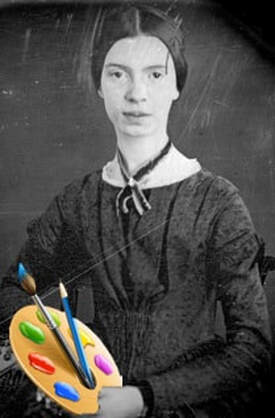What concepts and imagery of other fields of study are prevalent in Dickinson’s poems?
I knew that Dickinson was a pianist as well as a poet, so I decided to look into various disciplines related to Fine Arts. What terms related to fine arts did Dickinson use in her poetry -- and how often -- and did Dickinson favor one form over others? Is there more imagery related to music than dance? Or did her love of poetry lead to more imagery connected to writing?
I checked the number of poems by Dickinson which used the following terms: art, paint, sculpt, dance, ballet, opera, sing, song, music, theatre, drama, write, poetry, poem, prose and literature. The results are below. However, before you scroll down – what do you think? Which form of art did Dickinson write about most often?
Also, before you scroll down, check out this two part blog post from 2013 and 2014 by George Boziwick for the New York Public Library about Dickinson’s love of music:
Part 1, “Finding a Life at The New York Public Library: Emily Dickinson, the Avid Music Collector,” is HERE.
Part 2, “MY Business is to Sing: Emily Dickinson, Musician and Poet,” is HERE.
Now back to the topic at hand: how often did Dickinson use terms related to various fine arts in her poetry. Scroll down to see.
** There were 169 entries in the Dickinson archive for the word play which represented 63 poems. Of those poems, I could find only one in which the use of the word "play" could be interpreted as a theatrical production, "That is solemn we have ended" (below). There were two other very remote possibilities, "One day is there of the series" and "Grief is a mouse," but I do not think Dickinson used "play" in those poems to suggest any sort of dramatic performance, so I did not include those.
*** Of the 4 poems that include the word "poetry" and the 3 poems that include "poem," one poem includes both "poetry" and "poem."
That is solemn we have ended
Be it but a Play
Or a Glee among the Garret
Or a Holiday
Or a leaving Home, or later,
Parting with a World
We have understood for better
Still to be explained.
For more statistics related to the poetry of Emily Dickinson, click HERE.


 RSS Feed
RSS Feed
